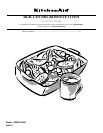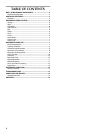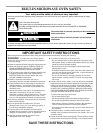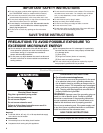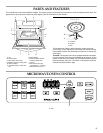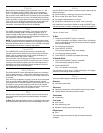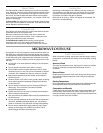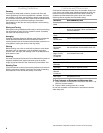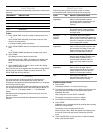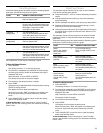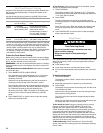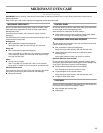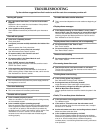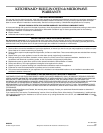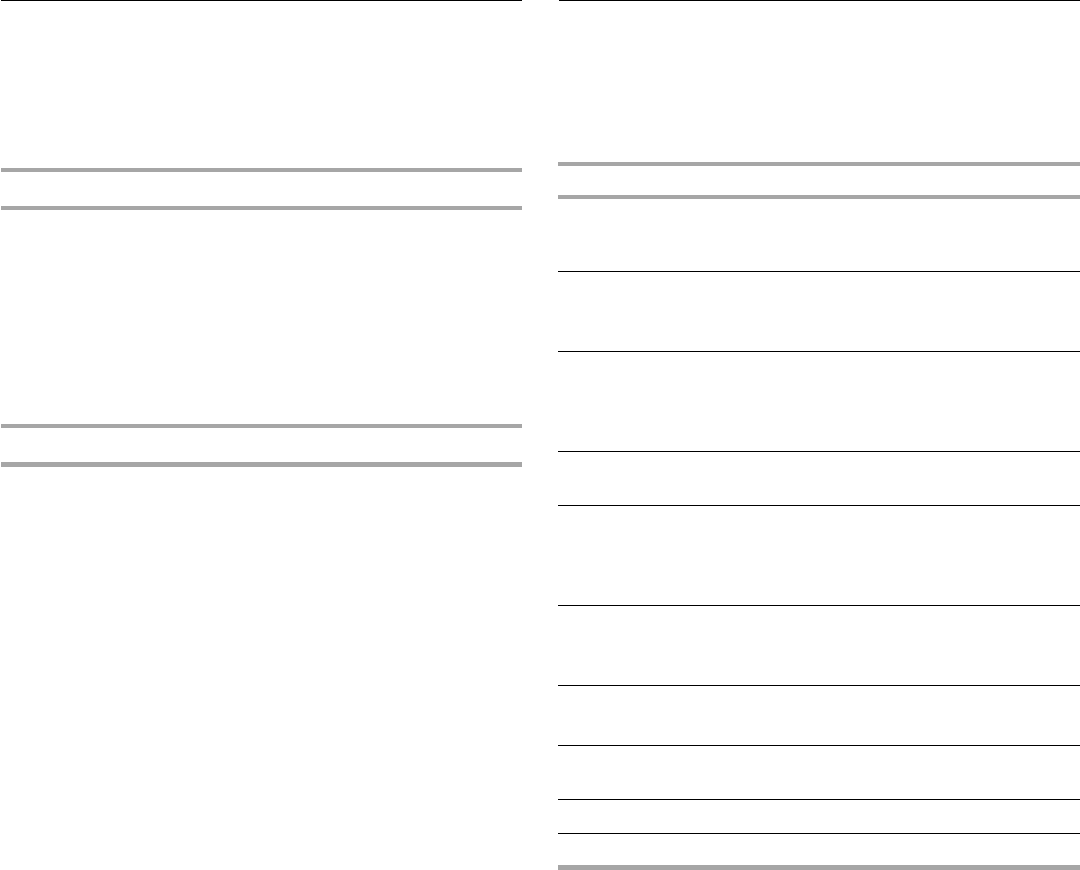
9
Aluminum Foil and Metal
Always use oven mitts or pot holders when removing dishes from
the microwave oven.
Aluminum foil and some metal can be used in the microwave
oven. If not used properly, arcing (a blue flash of light) can occur
and cause damage to the microwave oven.
OK for Use
Racks and bakeware supplied with the microwave oven (on some
models), aluminum foil for shielding, and approved meat
thermometers may be used with the following guidelines:
■ Do not allow aluminum foil or metal to touch the inside cavity
walls, ceiling or floor.
■ Always use the turntable.
■ Do not allow contact with another metal object during
cooking.
Do Not Use
Metal cookware and bakeware, gold, silver, pewter, non-
approved meat thermometers, skewers, twist ties, foil liners
such as sandwich wrappers, staples and objects with gold or
silver trim or a metallic glaze should not be used in the
microwave oven.
Microwave Cooking Power
Many recipes for microwave cooking specify which cooking
power to use by percent or name. For example,
70%=Medium-High.
Use the following chart as a general guide for the suggested
cooking power of specific foods.
PERCENT/NAME USE
100%, High
(default setting)
Quick heating convenience foods and
foods with high water content, such as
soups, beverages and most vegetables.
90% Cooking small, tender pieces of meat,
ground meat, poultry pieces and fish fillets.
Heating cream soups.
80% Heating rice, pasta or casseroles.
Cooking and heating foods that need a
cook power lower than high. For example,
whole fish and meat loaf.
70%,
Medium-High
Reheating a single serving of food.
60% Cooking sensitive foods such as cheese
and egg dishes, pudding and custards.
Cooking non-stirrable casseroles, such as
lasagna.
50%, Medium Cooking ham, whole poultry and pot
roasts.
Simmering stews.
40% Melting chocolate.
Heating bread, rolls and pastries.
30%, Medium-
Low, Defrost
Defrosting bread, fish, meats, poultry and
precooked foods.
20% Softening butter, cheese, and ice cream.
10%, Low Taking chill out of fruit.



